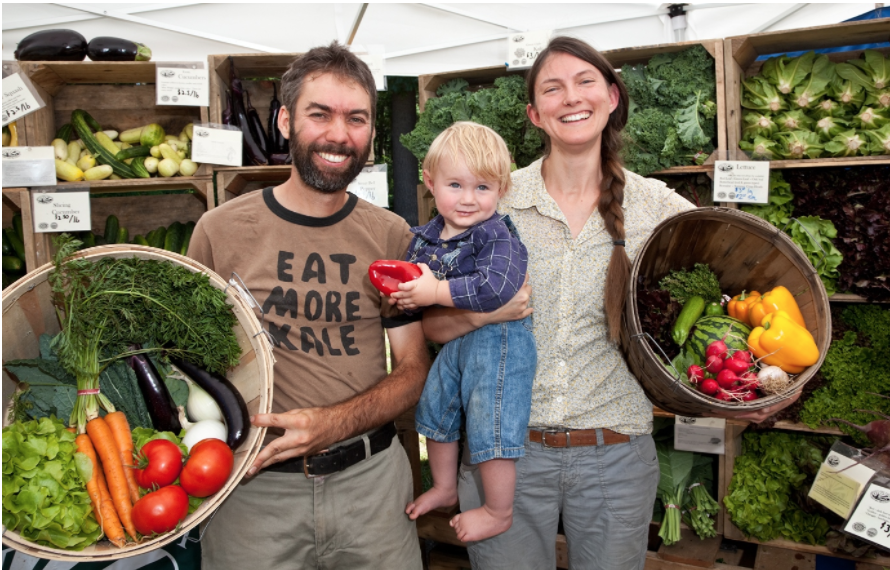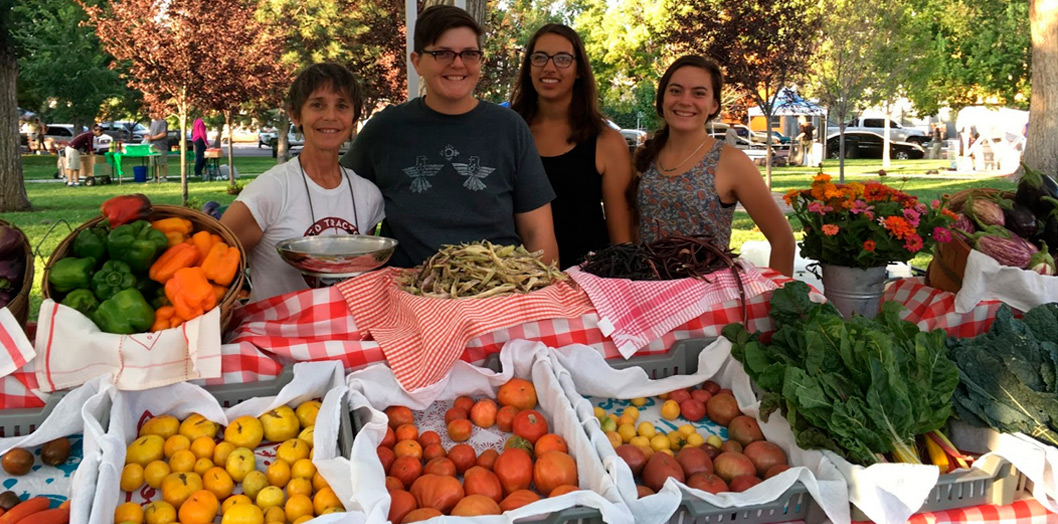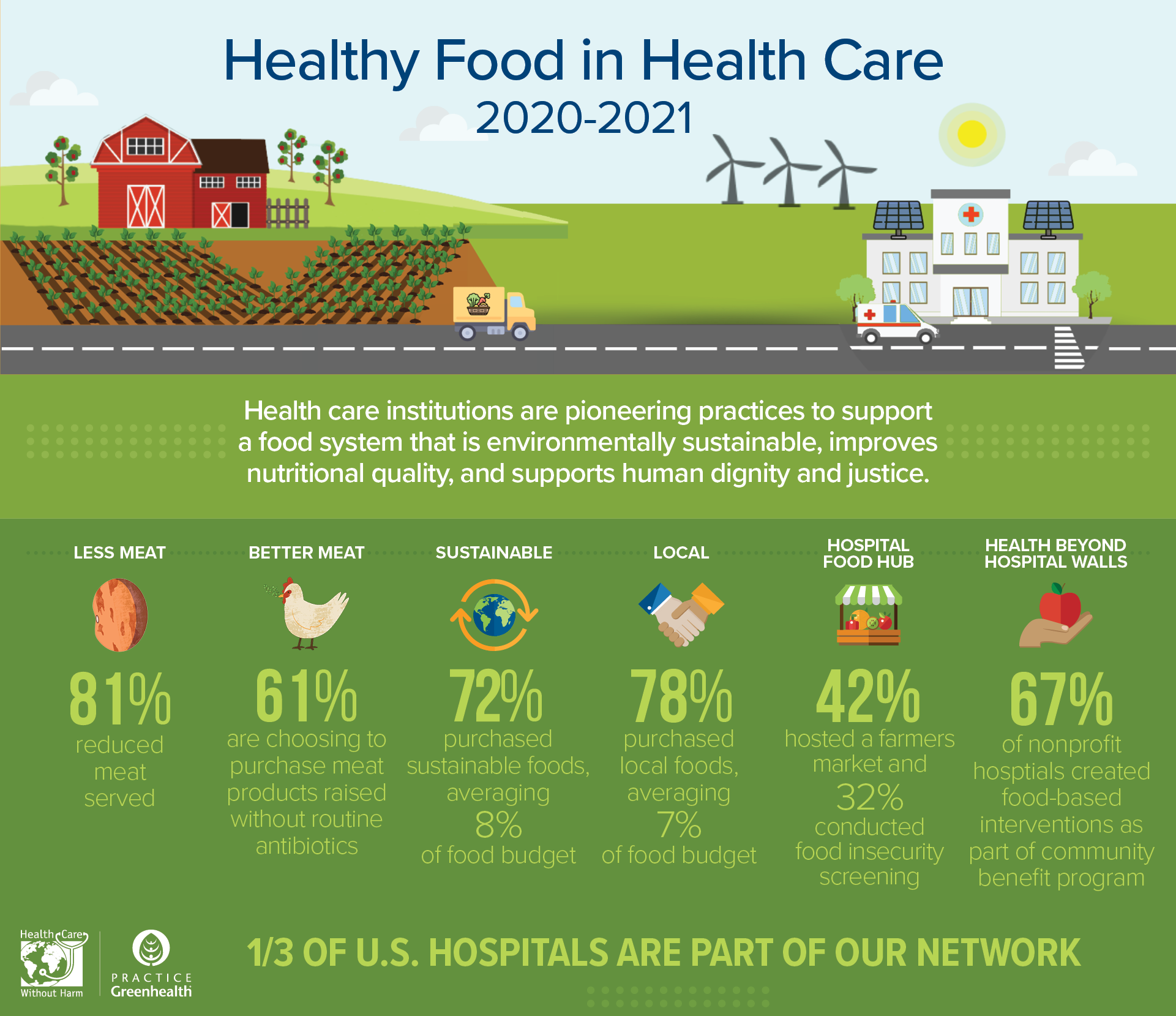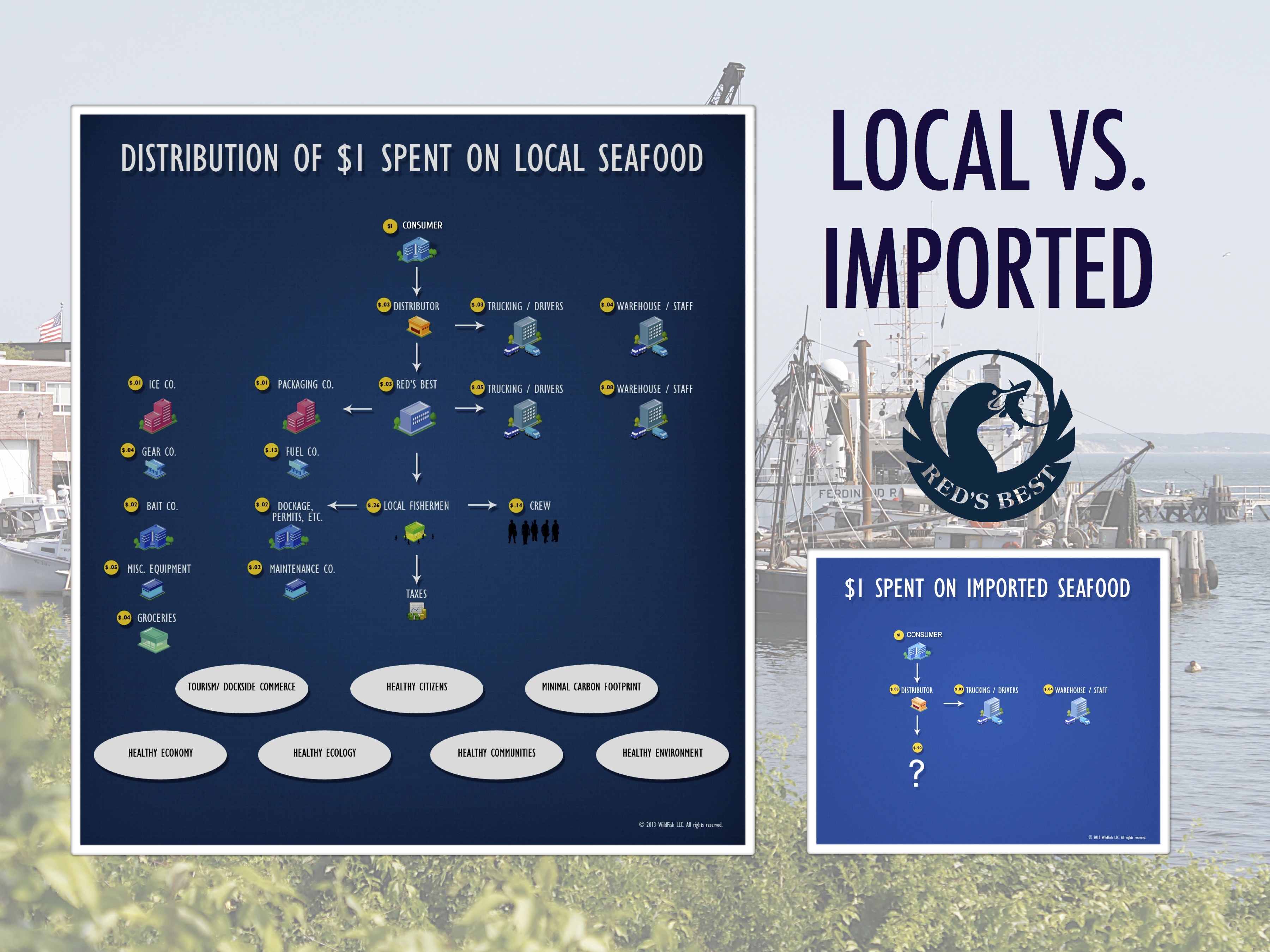Why buy local?
Invest in healthy people, places, and economies
A Health Care Without Harm position statement
The health care sector can increase access to healthy foods while addressing the social and environmental determinants of health in their communities, by creating jobs and contributing to a strong and equitable food economy.

Red Fire Farm, an organic farm in Massachusettes and member of the Faces of New England cohort, a farm-to-institution initiative (Red Fire Farm).
Local food has become a priority for individuals and institutions across the country. From 2006 to 2014 the number of farmers markets increased by 180%, sales to food hubs (local food aggregators) increased by 288%, and farm-to-school programs increased by 430%. Local food sales in the United States were estimated to be $8.7 billion in 2015.
Over the past 50 years, food and agribusiness companies have prioritized efficiency in food production, processing, storage, and distribution. Diversified farms growing multiple food items have given way to specialization, and fewer and fewer companies are producing, processing, and distributing our food. This consolidation is also seen geographically, with particular states or regions producing the bulk of what we eat, and other states and regions producing very little.
The consolidation of the food system has led to:
- The economic decline of rural communities
- Fewer opportunities for small and mid-sized and people of color owned farmers and food companies
- A general lack of control and connection to food production
- Environmental degradation
Defining local
Health Care Without Harm and Practice Greenheath define “local" as food grown/raised/ harvested/ processed within 250 miles of the health care facility (500 miles for meat, poultry, and seafood).
Compounding this trend, diet-related diseases have become the leading causes of death in the United States, disproportionately impacting low-income and communities and people of color. While we produce an abundance of food, a great deal of it is highly processed which is counter to dietary guidance from the Department of Agriculture and contributes to poor health outcomes.
Rebuilding local and regional food systems can address these interrelated, complex issues by giving communities greater control over food production, providing jobs and opportunities, and increasing access to healthy, fresh foods.
In 2021, Health Care Without Harm and Practice Greenhealth found that 78% of health care survey respondents spent, on average, 7% of their budgets on local foods, using a variety of supply chain pathways.
Community resiliency
5) Protects farmland and the environment
According to American Farmland Trust, over 40 acres of farmland are lost each hour in the United States due to urban sprawl. Further, 91% of fruits and 77% of vegetables are grown on “urban edge” farms that are under threat of development. Pressure to develop farmland is strong as property values rise, particularly lands in relatively close proximity to metropolitan areas, because development brings higher revenues than farming.
However, well-managed farmland provides services to the community that are not captured in an analysis based solely on revenue from the land.
Farm’s using ecologically sustainable practices also perform ecosystem services:
- preserving and building topsoil which absorbs carbon from the atmosphere
- protecting water sources
- maintaining open spaces like fields, forests, and meadows
- preserving genetic diversity
Farms growing for local markets often maintain genetic diversity because they grow a wider variety of crops than farms growing for national markets, which grow for standardization and a long route to the plate.
Maintaining farmland also keeps taxes lower because farms generate more public revenue than they receive in public services, whereas residential use requires far greater public services.
Health care can help preserve farmland and maintain the services farms provide by buying food produced sustainably, locally and regionally.
Farms protect clean drinking water
New York City recognizes the role of sustainably managed farms in protecting water resources for its residents. The Watershed Agricultural Council works with farmers and foresters to implement environmentally sustainable practices and to conserve working lands in order to provide clean drinking water to more than 9.5 million New Yorkers every day. Since its inception in 2001, the council’s Agricultural Conservation Easement program has protected 25,845 acres of farmland in the watersheds that surround New York City’s reservoirs in the Catskills.
6) Ensures dependable food supply
The supply chains to population centers are getting longer with fewer goods and fuel on hand locally, leaving hospitals and communities vulnerable to interruptions during natural disasters, bacterial outbreaks, and other emergencies.
In successful regionally based food systems of the past, food was grown in surrounding rural areas and processed and warehoused in cities. Cities often had weeks of food on hand.
While the move toward consolidation in the food system has lowered prices and increased profits for food companies, it has made our system more vulnerable to events such as a bacterial outbreak, livestock or poultry disease, and extreme weather events.
- In 2013, Superstorm Sandy flooded New York City grocery stores, and road closures left some stores without food for two weeks.
- Flooding in Houston in 2017 left Ben Taub Hospital, the city's largest Level 1 trauma center, running critically low on food for days.
Natural disasters are expected to continue to disrupt our food system. Compounding this vulnerability, major food distributors and fuel suppliers have moved toward “leaner supply chains,” with oil refinery closures and food storage warehouses stocking less food to increase profitability.
A 2017 Johns Hopkins Center for a Livable Future report on the City of Baltimore’s food system resilience found that the geographic concentration of food processing and food distribution/warehouses, and the specialization in crop production could compromise their ability to access food in a crisis. The report recommended balancing their reliance on national and global food markets with local and regional food systems.
Health care can play an important role in building food system diversity and resiliency and ensuring a reliable food supply for their communities by supporting local and regional food producers.

The Healthy Here Mobile Farmers Market is a market on wheels that sells produce from the Agri-Cultura farmers cooperative, traveling to clinics, schools, and community centers in Albuquerque’s areas of highest need (Healthy Here PR at CW Communications).
Take action
By purchasing regionally grown foods from sustainably managed farms, health care has access to a wider variety of tastier, fresh foods that can be enjoyed seasonally and at their peak of nutritional value.
Buying regional foods can also contribute to community development, providing jobs and opportunity for disadvantaged communities, and can support the local economy, building community wealth.
Health care can take action now to provide healthier food to patients and staff, while preserving farmland, protecting our environment, and ensuring a reliable food supply.
- Communicate with your vendors about your preference for locally and regionally produced foods. Health Care Without Harm and Practice Greenhealth define local as food grown/raised/ harvested/processed within 250 miles of the health care facility (500 miles for meat, poultry, and seafood) and assists the sector in strategies to increase purchasing. Ask your vendors to help you identify local foods by listing source of origin so you can track and share your progress.
- Utilize RFPs and contracts with vendors to ensure they will help you meet your goals in sourcing local foods. Farm to Institution New England’s Food Service Toolkit provides guidance and sample RFP and contract language.
- Buy direct from a farm or seek out food hubs, co-ops, or other distributors that specialize in local foods. Contract with a farmer and engage in pre-season planning so they can grow according to your needs.
- Employ culinary strategies such as seasonal menus that make use of the freshest food in your region. Local foods that are in season can be price competitive with foods sold nationally. Reducing meat on your menu is another cost-saving culinary strategy, which can result in savings that can be funneled to local produce and sustainably raised local meat.
- Buy underutilized produce and seafood. Farm seconds, also known as “ugly fruit,” which may not be suitable for retail markets because of their appearance, are perfect for institutional kitchens. Ask local farmers or distributors about seconds in order to save money and prevent food waste. Many of the seafood species in our local waters are underutilized because they are unfamiliar, yet make excellent substitutes for more commonly known fish. Our seafood guide can help you prioritize local, wild seafood.
- Make community benefit investments in local food systems, which can improve access to healthy foods, address the social and environmental determinants of health, and create jobs. Visit our Delivering community benefit: Healthy food playbook to learn how health care facilities are increasing healthy food access and local food system growth through community benefit investment.
- Refer to the Healthy Food in Health Care standards and guidance resources for additional strategies and resources to support planning, implementing and tracking the impact of your local food purchasing efforts.
Contact a Healthy Food in Health Care representative in your region for more information and assistance in meeting your food goals, and join Practice Greenhealth for individualized technical assistance and national recognition for your work in supporting the local food system.


 The multiplier effect: Local purchasing has an impact on the local economy (Reds Best Seafood).
The multiplier effect: Local purchasing has an impact on the local economy (Reds Best Seafood).